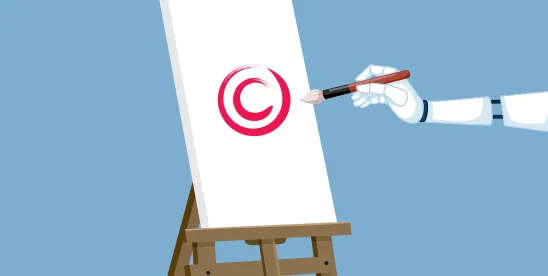Highlights
The latest report from the U.S. Copyright Office clarifies that the use of AI to assist human creativity does not necessarily preclude copyright protection for the resulting work
The key distinction lies in whether AI is merely a tool aiding human creativity or whether it serves as a substitute for human authorship
The Office reassures creators that using AI for tasks such as outlining a book or generating song ideas does not affect the copyrightability of the final work, provided the author is “referencing, but not incorporating, the output”
The U.S. Copyright Office released its January 2025 report to address the legal and policy issues related to artificial intelligence (AI) and copyright, as outlined in the Office’s August 2023 Notice of Inquiry. This report has clarified that outputs generated by AI based solely on text prompts – regardless of their complexity – are not protected under current copyright law.
According to the Office, while generative AI represents an evolving technology, existing copyright principles remain applicable without requiring changes to the law. These principles, however, provide limited protection for many AI-generated works.
The Office’s report states that AI-generated outputs lack the necessary human control to confer authorship on users, as AI systems themselves cannot hold copyrights. The Office emphasized that whether a prompt is simple or highly detailed, it does not establish the user as the author of the resulting work. The Office argues that even when users refine and resubmit prompts multiple times, the final output ultimately reflects the AI system’s interpretation rather than the user’s original authorship.
Exemplifying the distinction between AI-generated works and human authorship, the Office contrasts the AI-generation process with Jackson Pollock’s painting technique. While Pollock did not precisely control the placement of each paint splatter, he exercised creative authority over key artistic choices, such as color selection, layering, texture, and composition. His physical movements were integral to executing these choices, demonstrating a level of human control the Office says is absent in AI-generated content.
However, the Office says some degree of protection may also apply when artists modify their own work using AI. For instance, an artist who enhances an illustration with AI-generated 3D effects may retain copyright protection, provided the original work remains recognizable. While AI-generated elements themselves remain uncopyrightable, the “perceptible human expression” in the modified work could still qualify for protection.
Similarly, the Office notes that works that incorporate AI-generated content may be eligible for copyright if they involve significant human creative input. A comic book featuring AI-generated images could receive protection if a human arranges the images and pairs them with original text, though the AI-generated images alone would not be covered. Likewise, a film with AI-generated special effects or background artwork remains copyrightable, even if the individual AI-generated elements are not.
The Office notes that, on a case-by-case basis, even AI-generated images prompted by users could receive protection if a human selects, modifies, and remixes specific portions, drawing an analogy to derivative works of human-created art – except without an original human author.
The U.S. Copyright Office identifies three primary scenarios in which AI-generated material may qualify for copyright registration and receive an official certificate of copyright:
- When AI-generated output includes human-authored content
- When a human significantly modifies, arranges, or edits the AI-generated material
- When the human contribution demonstrates a sufficient degree of creativity and originality
The report also addresses whether AI-generated text prompts themselves can be copyrighted. Generally, the Office likens prompts to “instructions” that convey uncopyrightable ideas. However, the Office acknowledges that particularly creative prompts may contain “expressive elements,” though this does not extend copyright protection to the outputs they generate.
This guidance forms part of the Copyright Office’s broader initiative to address AI-related legal and policy issues. It follows a July 2024 report advocating for new deepfake regulations, and the Office plans to release a final report examining “the legal implications of training AI models on copyrighted works.”
Takeaways
The Copyright Office does not rule out the possibility that this legal landscape could evolve alongside AI technology. It notes that, in theory, AI systems could eventually allow users to exert such a high degree of control over the output that the system’s role becomes purely mechanical. However, under current conditions, prompts do not “adequately determine the expressive elements produced, or control how the system translates them into an output.”
Ultimately, the Copyright Office emphasizes that the critical issue is not the predictability of the outcome but the degree of human control over the creative process.





 />i
/>i

